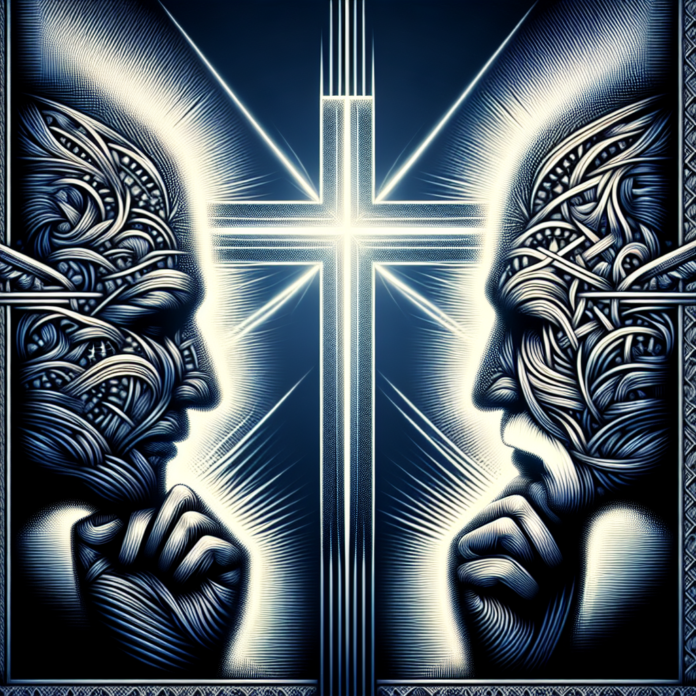Navigating Doctrinal Debates Within American Catholicism: Progress Amid Tradition
The Catholic Church in the United States stands at a crossroads, framed by intricate doctrinal debates that influence its path forward. This tension is emblematic of the broader dispute playing out on the global ecclesiastical stage: a clash between time-honored traditions and a modern, inclusive approach that resonates with the evolving societal norms. At the heart of this dialogue stands Pope Francis, a pontiff who embodies a vision of compassionate progressivism, significantly stirring the pot of traditionalist waters within American Catholicism.
For centuries, the Catholic Church has been a vanguard of tradition, with a steadfast commitment to its doctrines and rituals. One clear pivot of this debate is the Latin Mass, a centuries-old rite resurrected by Pope Benedict XVI in 2007. The Latin Mass, with its distinct ceremony and language, has become a bastion for Catholic traditionalists in America, who view it as the purest form of worship. Yet, its resurgence also illuminates a resistance to the inclusive reforms heralded by the Second Vatican Council—a pivotal moment in Church history during the 1960s that emphasized accessibility and modernization, including the widespread adoption of the vernacular Mass.
Progressive American Catholics express concern that an unyielding adherence to the Latin Mass symbolizes a deeper reluctance among traditionalists to engage with contemporary issues, from social justice to inclusivity within the Church. The fixation on maintaining historical liturgy may inadvertently isolate younger generations who seek a faith experience that harmonizes with modern life’s complexities. This dissonance is palpable; the Church risks appearing as an institution frozen in time, rather than one that is responsive and adaptable.
Pope Francis, elected in 2013, represents a paradigm shift. His leadership style—grounded in humility and openness—signals a fresh, progressive chapter for the Catholic Church. A transformative figure, he emphasizes issues such as climate change, economic inequality, and the pastoral care of marginalized communities. Unlike his more traditional predecessors, Francis openly critiques the Church’s historical rigidity, championing a model of pastoral care that transcends dogmatic boundaries. His encyclicals, such as “Laudato Si’” and “Amoris Laetitia,” encourage dialogue on issues facing the modern world, fostering an atmosphere where faith and modernity can coalesce.
Under Pope Francis, a notable shift has occurred in the Church’s approach to previously controversial issues, including interfaith relations, same-sex relationships, and the role of women within the Church. Francis’s groundbreaking document, "Querida Amazonia," advocates for a deeper understanding of ecology and indigenous rights, suggesting a radical openness not traditionally associated with the institution. His emphasis on "synodality"—the practice of listening to and consulting the global Church community—embodies his commitment to inclusivity.
Yet, American Catholic traditionalists remain wary. For them, this progressive shift signifies a dilution of Catholic identity, a deviation from what they perceive as the core tenets handed down through centuries. The tension has intensified in the aftermath of Pope Francis’s 2021 motu proprio “Traditionis Custodes,” which restricts the celebration of the Latin Mass. Traditionalists argue that this move marginalizes a fundamental element of Catholic spirituality and heritage. However, Pope Francis’s edict seeks to unify the Church by fostering a single, cohesive liturgical practice, embracing the spirit of Vatican II reforms.
These debates are not confined to the inner echelons of the Church but ripple outward, influencing American Catholic life on various levels—from parishes to public squares. As the country grapples with polarizing social issues, progressive Catholics are often at the vanguard, advocating for positions that align with Pope Francis’s vision of a Church actively engaged in social justice. They press for the ordination of women, LGBTQ+ rights within the Church, and a stronger stance on climate change, challenging the hierarchy to reflect the diversity and complexity of modern Catholic lives.
Historically, the Catholic Church in America has been a dynamic tapestry woven with threads of immigration, cultural exchange, and socio-political evolution. The current discourse is a continuation of this legacy, where theological rigidity frequently intersects with endeavors for reform. The broader implications of these internal conflicts are profound, affecting the Church’s ability to engage with an increasingly secular society while maintaining relevance.
In conclusion, as American Catholicism grapples with its doctrinal crossroads, the dichotomy between tradition and progress comes sharply into focus. While traditionalists hold fast to their cherished practices, lending stability and continuity, Pope Francis’s progressive vision challenges the Church to embrace a dynamic, inclusive approach responsive to the exigencies of the present age. Navigating these ecclesial waters requires a delicate balance between preserving the richness of history and embracing the promise of transformation—an invitation for the Catholic Church to serve as both a guardian of tradition and a lighthouse guiding its faithful into the future.
